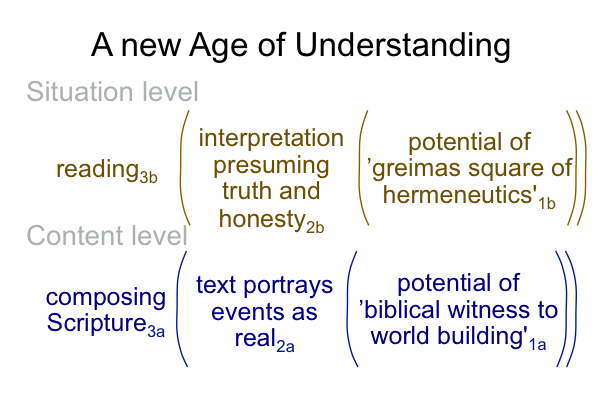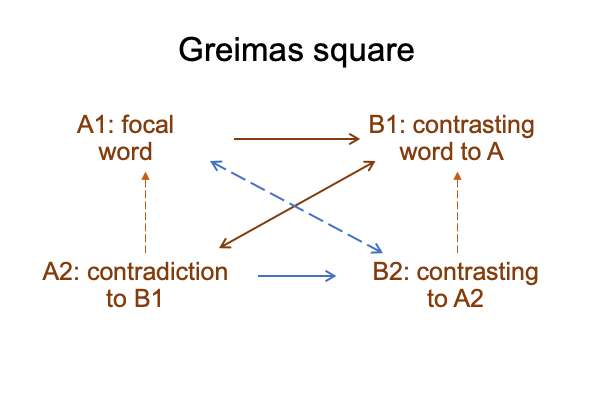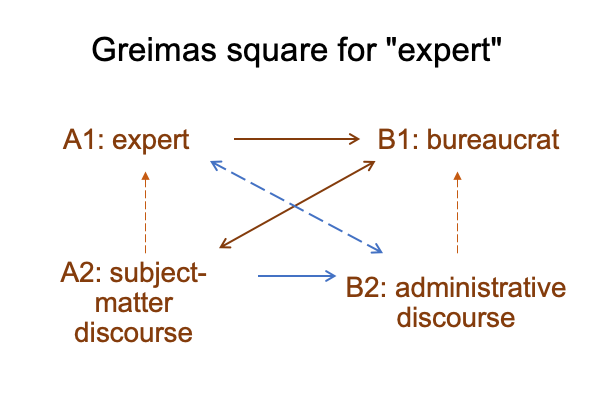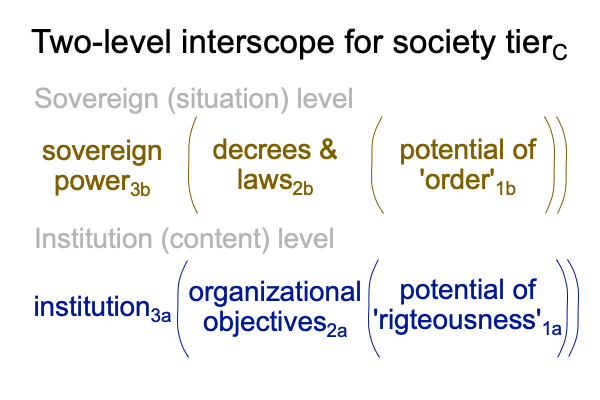Looking at Andrew Kulikovsky’s Overview (2005) “The Bible and Hermeneutics” (Part 5 of 10)
0031 From the last few blogs, I show that the propositions that the Evangelical Theological Society affirm and deny, in 1978, may be placed into a greimas square.
Initially, this greimas square allows me to see that modern evolutionary science, before 2005, denies the Society’s affirmations and affirms its denials. So, either the Evangelical Theological Society or evolutionary theorists are correct.
Before 2005, the greimas square, even with modifications, represents a standoff. The relational structure cannot hold, unless modern evolutionary science comes up with a new discovery, such as the hypothesis of the first singularity.
0032 With the hypothesis of the first singularity, the science-oriented stances that Christian theologians once denied for good reason (B1 and B2), may be now rendered as contrasts to affirmed theological propositions (A1 and A2).
Such a change marks a new age of understanding, hence the title in the following diagram.
0033 Here is a picture of the sensible construction of biblical Genesis 1-11.

0034 Allow me to compare this to the original diagram.
The content-level normal context changes from writing3a, which implies that there are authors, to composing3a, which implies that there are people who are reciting the stories of witnesses2a, reporting on real events1a as best they can. Scribes eventually record these recitals2a. These texts are then assembled… or… “redacted” into the canonical text.
Thus, as affirmed by Articles IX and XII of The Chicago Statement on Biblical Inerrancy, the biblical text is correct and honest2b.
0035 Certainly, there are intended messages1a, but these are locked within the realness of the biblical witness1a. The history that Genesis 2:4-11 portrays shows a world rife with falsehood and deception, both of which are associated with “world building”. The intended message of the witnesses1a concerns what is going on during the Ubaid, the Uruk and the Sumerian Dynastic archaeological periods of southern Mesopotamia.
0036 The situation-level normal context remains the same, but now reading3b is more evocative, because a scientific notion is now entangled with the biblical text.
The hypothesis of the first singularity does not deny what the Evangelical Theological Society affirms1b. Yet, the hypothesis contrasts with their affirmations.
0037 Now, the truth and honesty that is presumed by theological interpretation2b, plays out against the backdrop of the “world building” in the Ubaid, Uruk and Sumerian archaeological periods of southern Mesopotamia1b. The reader can envision Genesis 2:4-11 as an insider’s view of the emergence of civilization in the milieu of the first culture practicing speech-alone talk.









